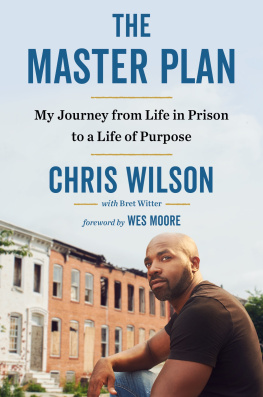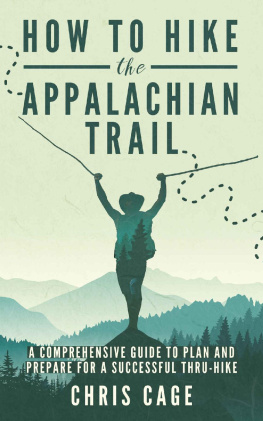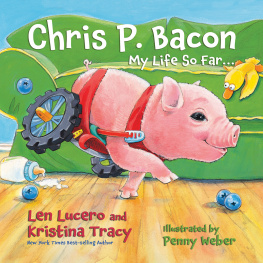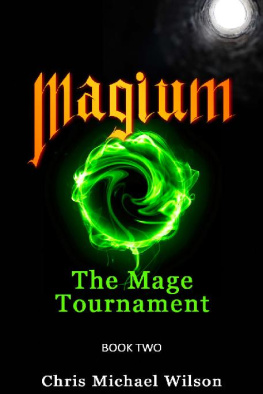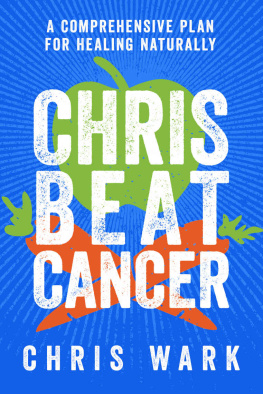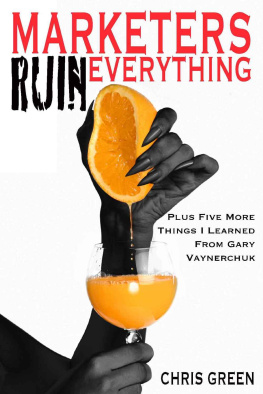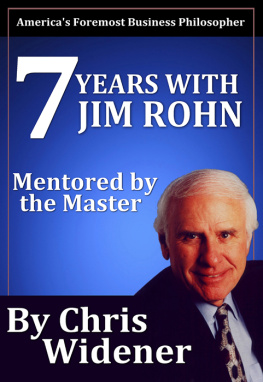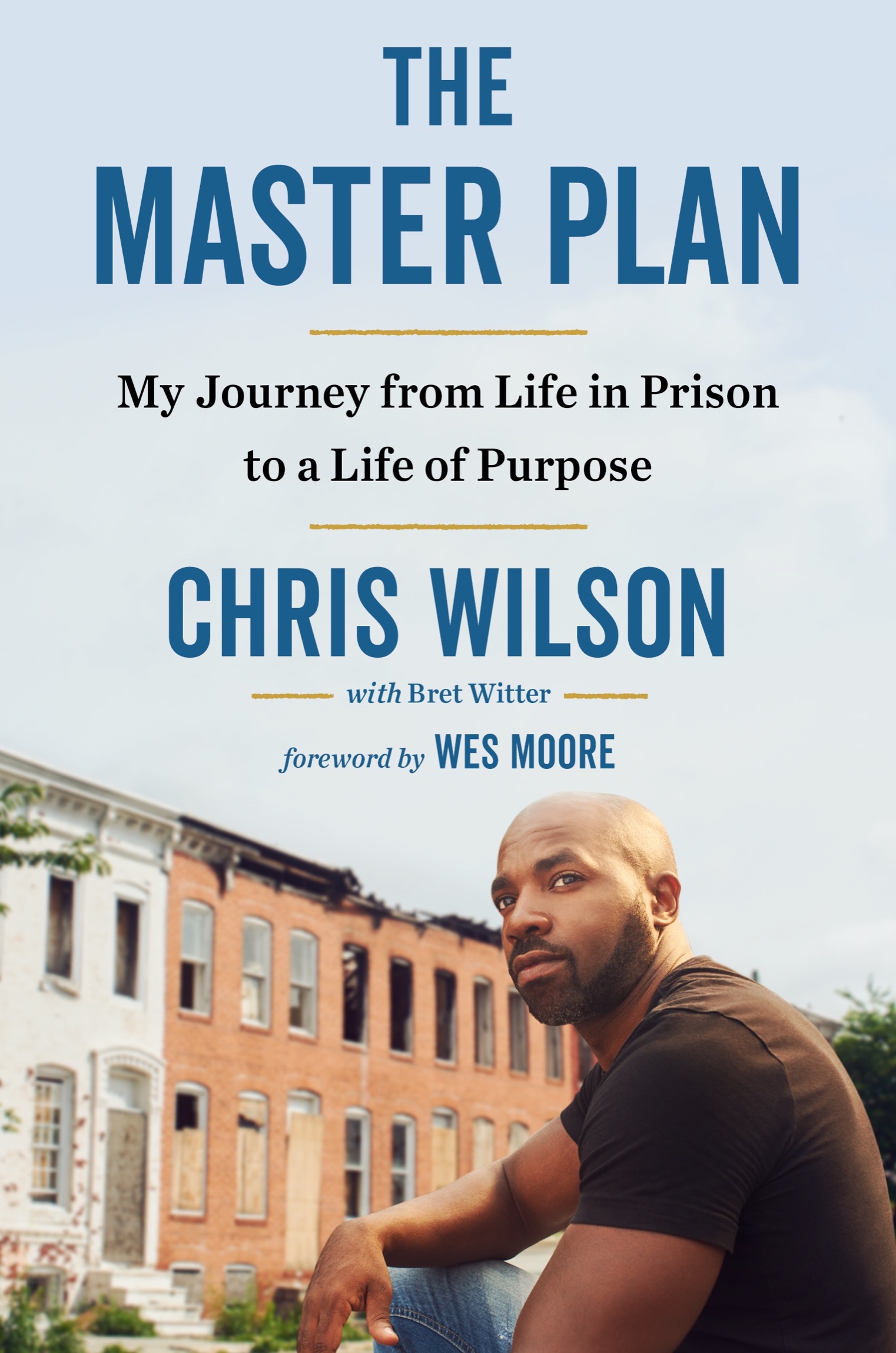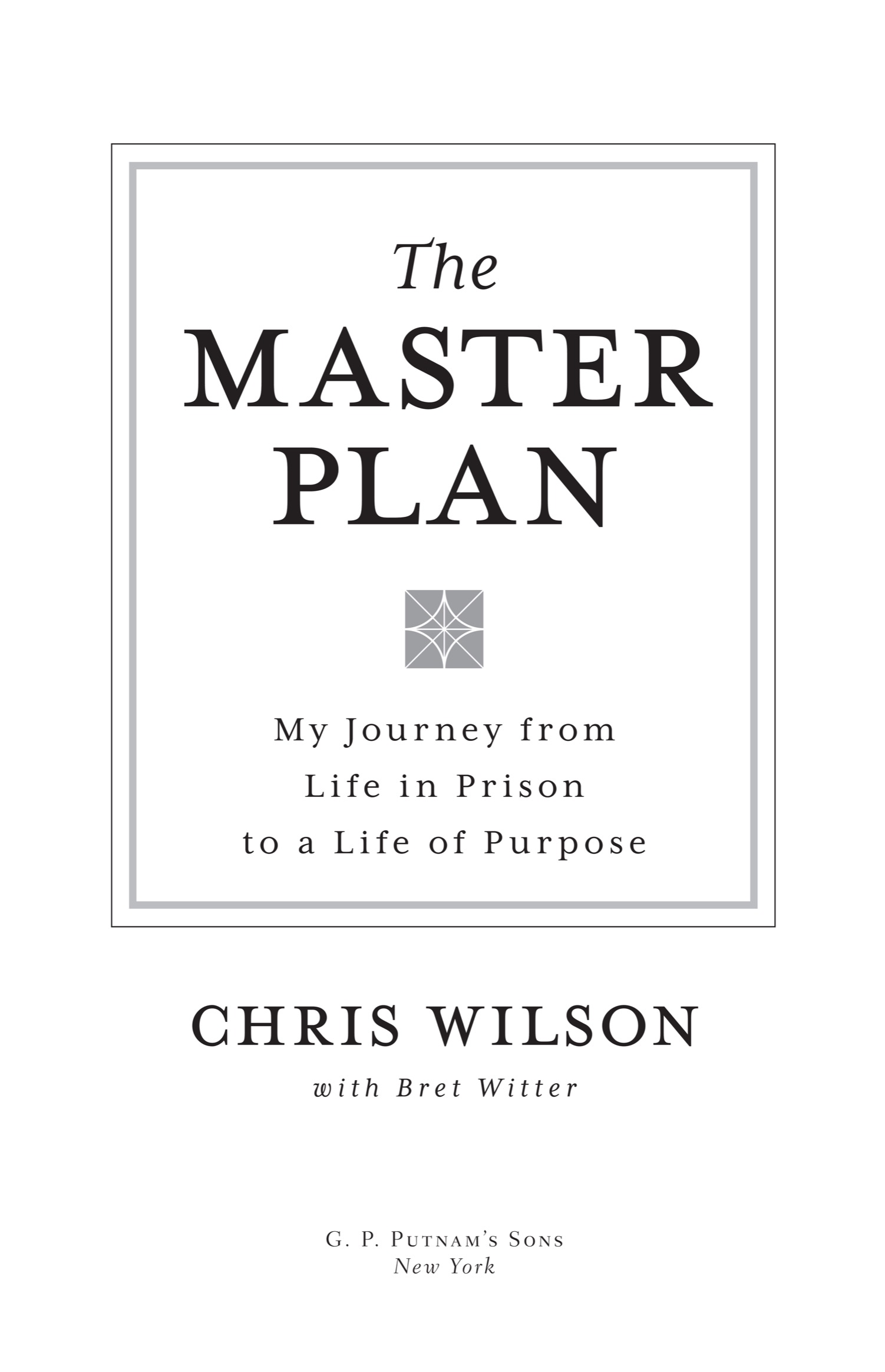
G. P. P UTNAM S S ONS
Publishers Since 1838
An imprint of Penguin Random House LLC
penguinrandomhouse.com

Copyright 2019 by Master Plan Productions LLC
Penguin supports copyright. Copyright fuels creativity, encourages diverse voices, promotes free speech, and creates a vibrant culture. Thank you for buying an authorized edition of this book and for complying with copyright laws by not reproducing, scanning, or distributing any part of it in any form without permission. You are supporting writers and allowing Penguin to continue to publish books for every reader.
All uncredited photos are courtesy of the author.
Library of Congress Cataloging-in-Publication Data
Names: Wilson, Chris, author. | Witter, Bret, author.
Title: The master plan : my journey from life in prison to a life of purpose / Chris Wilson ; with Bret Witter.
Description: New York : G. P. Putnams Sons, 2019.
Identifiers: LCCN 2018041588| ISBN 9780735215580 (hardcover) | ISBN 9780735215603 (ebook)
Subjects: LCSH: Wilson, Chris. | CriminalsRehabilitationUnited StatesBiography. | BusinessmenUnited StatesBiography. | Self-realization. | Conduct of life.
Classification: LCC HV6248.W4987 A3 2019 | DDC 338/.04092 [B] dc23
LC record available at https://lccn.loc.gov/2018041588
Penguin is committed to publishing works of quality and integrity. In that spirit, we are proud to offer this book to our readers; however, the story, the experiences, and the words are the authors alone.
Version_1
To my mom
Authors Note
A T THE REQUEST of my publisher and legal counsel, some names, places, and dates in this book have been changed to protect the people involved and those still hurting over events described here. I know, for them, this telling will be hard, and I am sincerely sorry for that pain, but I believe that as long as people are dying in our streets, stories like this need to be told. Please respect the privacy of those affected. Thank you.
At some point between my sentence reduction and my release, I lost the paper copies I had made over the years of my Master Plan. I now have only the last version, which I wrote for my judge and which is pictured in this book. I had stored the list on a floppy disk, which I kept in my cell, but every time I updated it I saved over the previous version, so those older versions are lost. I re-created the older versions of the Master Plan in this book by starting with this most recent version and making an educated guess at when items were added.
Foreword
I FIRST MET Chris Wilson five years ago when a mutual friend and prominent local philanthropist convened a small group of local leaders to discuss Baltimores future. The framing of the evening invited us to envision Baltimore in 2033 in the hope that we might generate a handful of new solutions to some of Baltimores deepest challenges. Over wine and good food, we considered the future of the city in the context of its declining population. We debated the obstacles to every child enjoying a quality education no matter where they attend school. We ruminated on the difficult fact that roughly 50 percent of Baltimores adult population does not work, and together, we started to explore ways we might reverse that trend.
It was on this last point of conversation that Chris Wilson emerged. Soft-spoken and impeccably dressed in a crisp white dress shirt adorned with a royal purple tie, Chris described the plight of black men across the city. He highlighted the fact that half of Baltimores black men are under some form of correctional control (i.e., in prison, paroled, or on probation). He conveyed, on a visceral level, the heavy stigma that burdens those caught up in the criminal justice system. By virtue of their conviction, our brothers and sisters cannot vote; employers, time and again, refuse to hire them upon their return home after completing a simple background check. Chris spoke of the pain that too many feel when they return home from prison: despite having served their time and paid their debt, recently returned men and women cannot move forward from their crime or their previous lives behind bars because of discriminatory barriers and attitudes perpetuated across society. Chris painted a clear, compelling, and ultimately urgent portrait of a large swath of the black community: generations of black men and women lost not only behind bars but functionally disappeared upon their return to society.
Chris reminded us that these men and women dont disappear. They exist. They are real. Their hopes, dreams, and struggles are valid and they matter. Chris closed that night by sharing his dream: He wanted to build, with his own hands, companies that made peoples lives better. He envisioned, for instance, a furniture company that would rehabilitate secondhand furniture as well as the prospects of the people whose hands created it. Chris believed that such a company would change the lives of the men and women who acquired critical skills behind bars but who returned home to find no avenues to employment. He also believed that a company led by the formerly incarcerated could alter our larger conversation about the people that we as a society are altogether too comfortable disregarding. Chris asked us a question: What if we didnt throw our people away? What would happen if we recognized their value? What would we discover about them? About us?
Something I learned in the course of writing The Other Wes Moore is that people are not only products of their environment but ultimately of their expectations. Who believes in us and to what end are among lifes most important questions. In The Master Plan, Chris Wilson challenges us to expect something more and different from the people we cast away. He challenges us to remember that they are our brothers and sisters, mothers and fathers, sons and daughters; through his words we come to regard the people we encounter throughout Chriss story with a level of dignity and respect rarely afforded to those housed or impacted by Americas criminal justice system. Chris rightly highlights that for the millions of Americans who languish behind bars and the millions more who have returned home, the American Dream has been foreclosed. Chris inspires us to dream what could be if we supported those who return home from prison in rebuilding their communities, raising their families, and advancing their careers. He challenges us to think about the many ways the world might be different.
Chriss favorite story is the allegory of the cave by Plato. On several occasions, Ive watched Chris relay the story in a speech and have always been moved by his telling of it. Chriss framing of modern inmates as prisoners in the metaphorical cave is heartbreaking because it forces us to fathom the dreary lives endured by men and women imprisoned behind bars. In our imaginations, we wrestle with the fact that for those in prison, lifes simple giftsfresh air, sunshine, blue skiesremain just beyond reach for years, decades, or quite possibly, life. Harder still to reconcile is the fact that despite those desperate and limited circumstances, these men and women never fail to dream or imagine a better life beyond the four walls that surround them. Chris presents us with those storiesthe yearning hopes and dreams fueled by a desire for a better lifeand in doing so,

